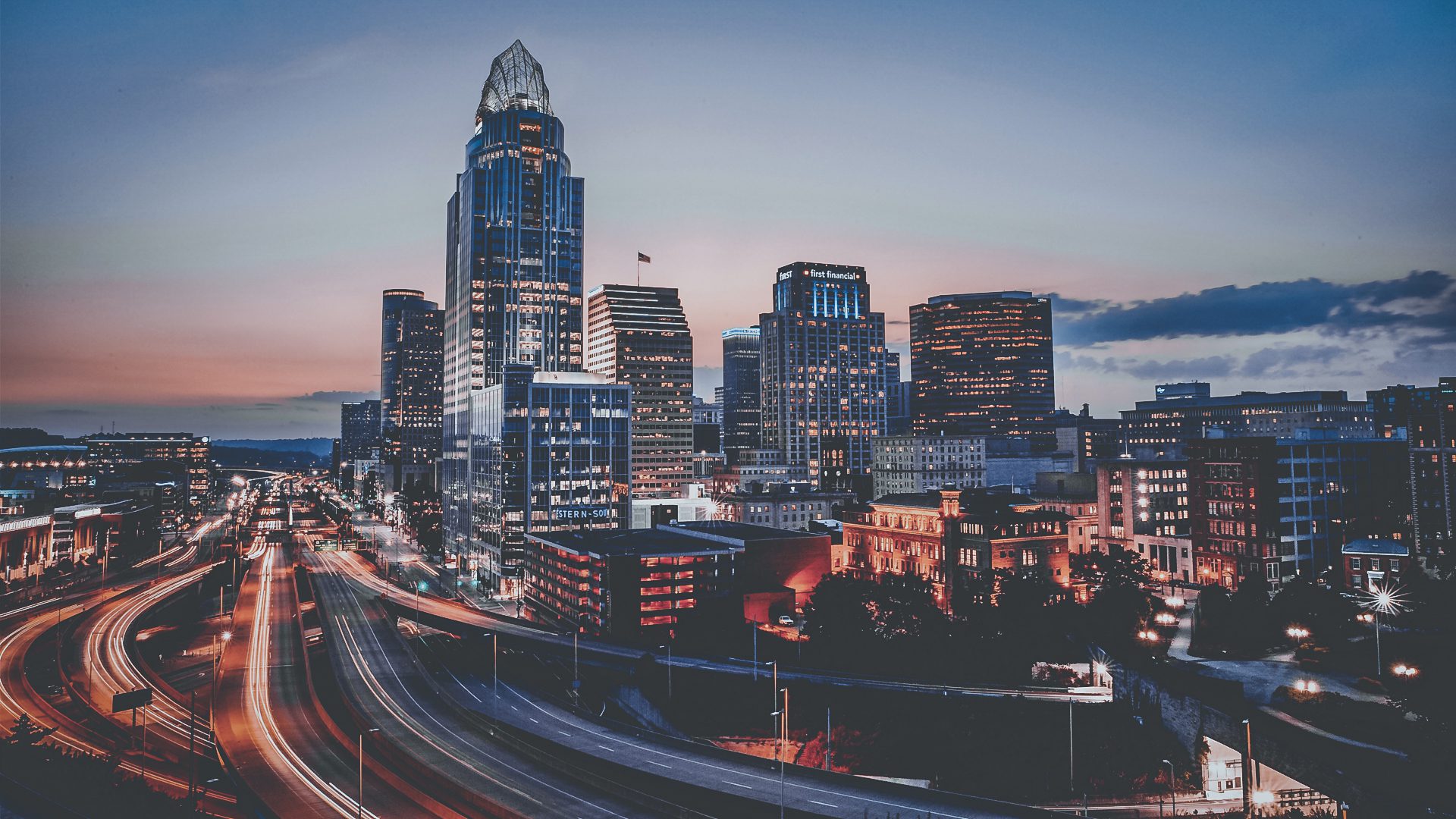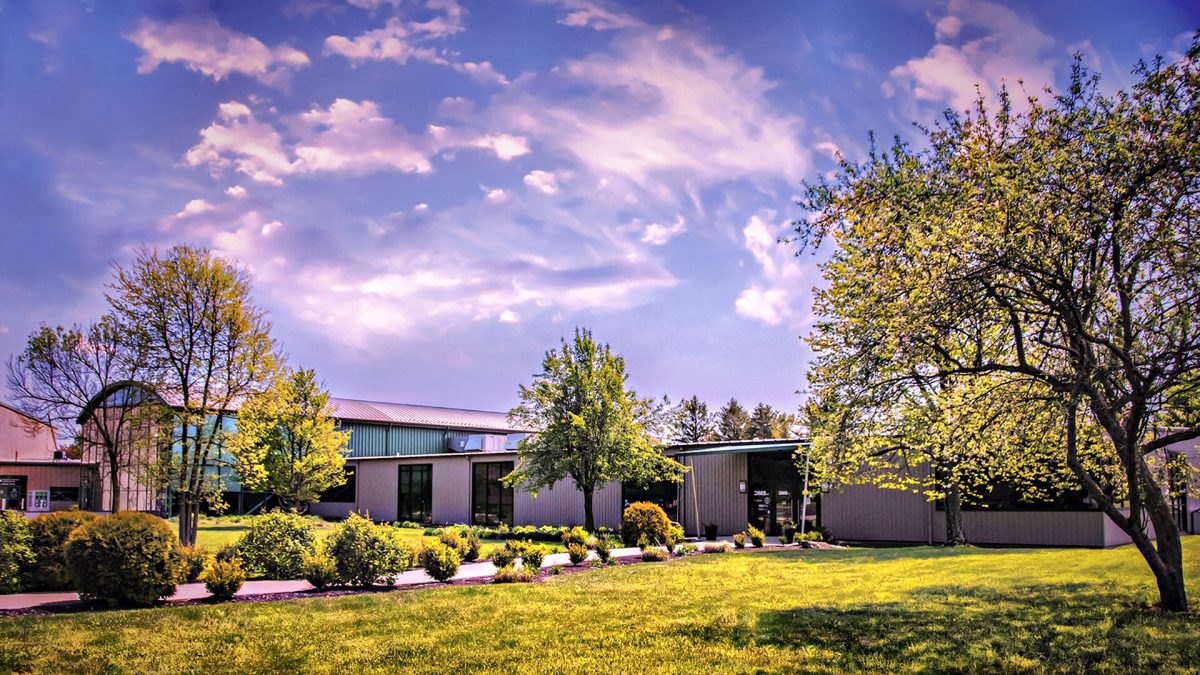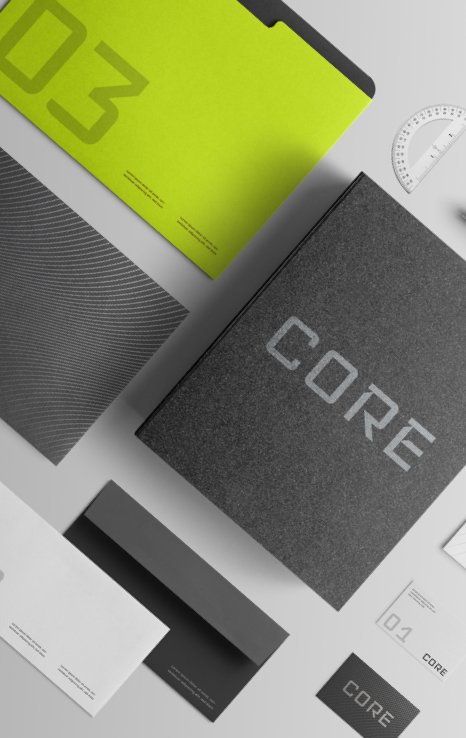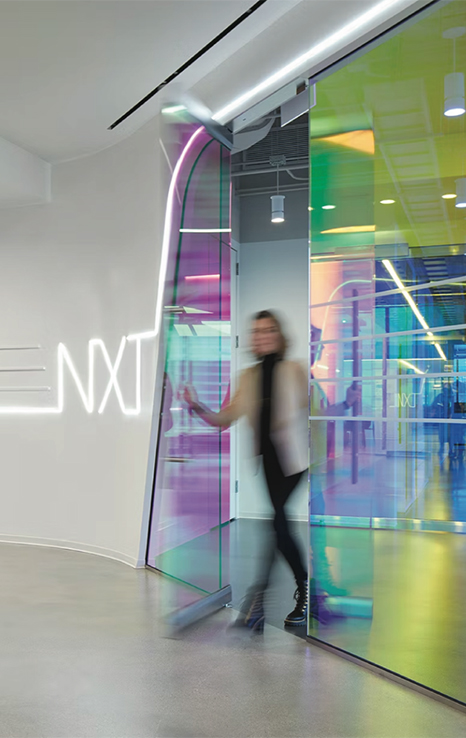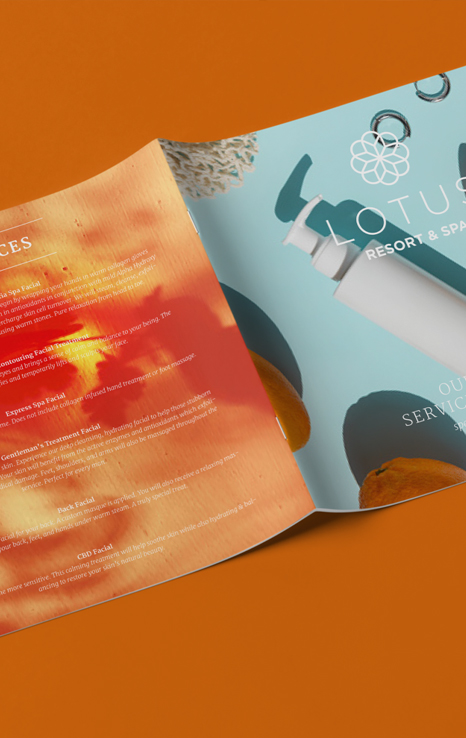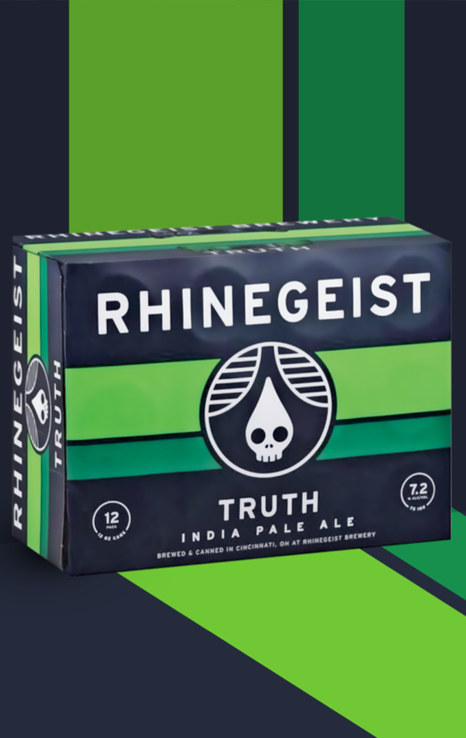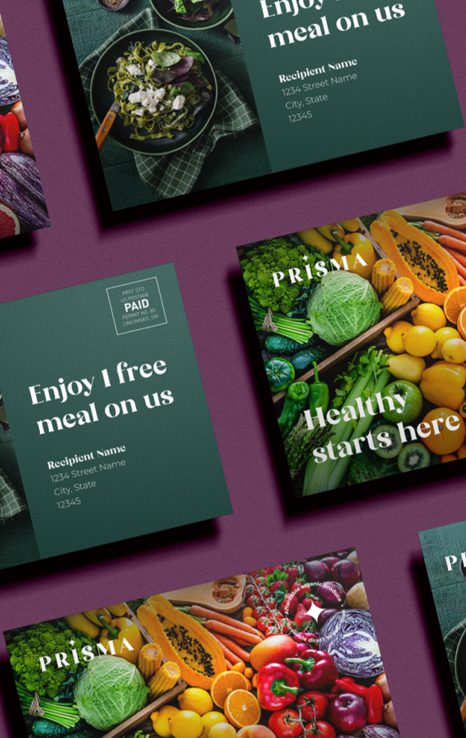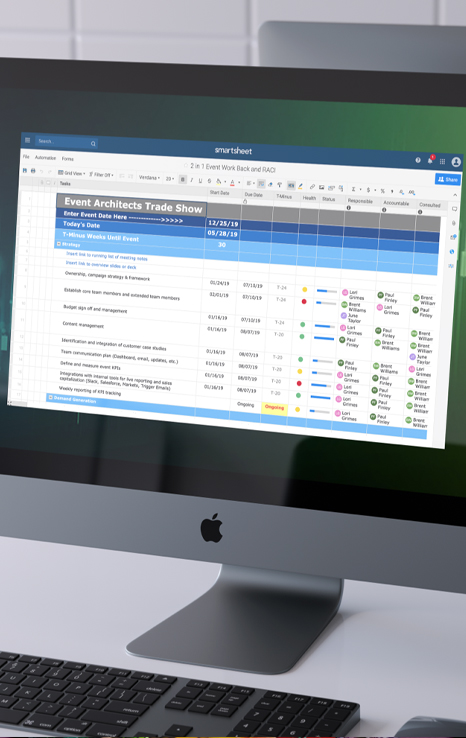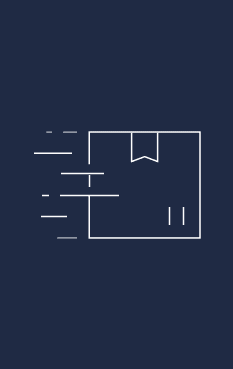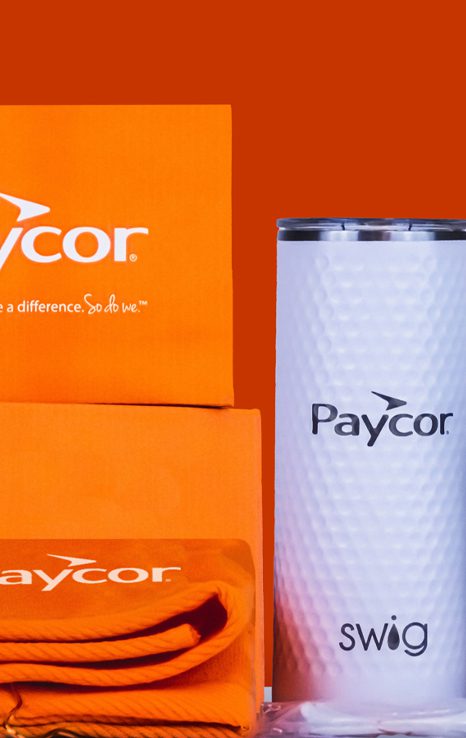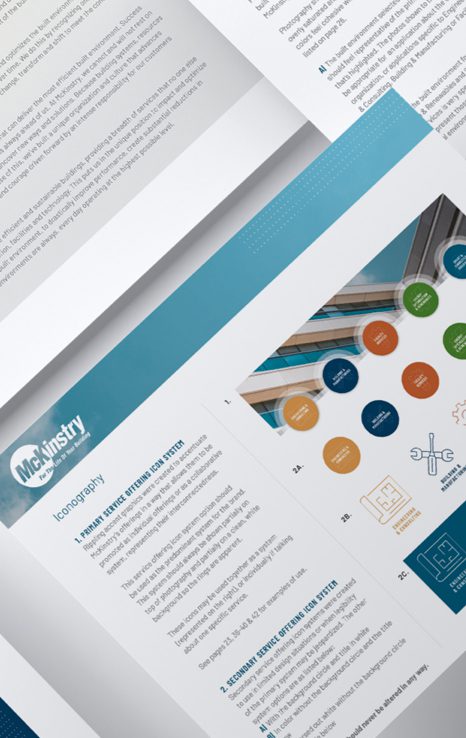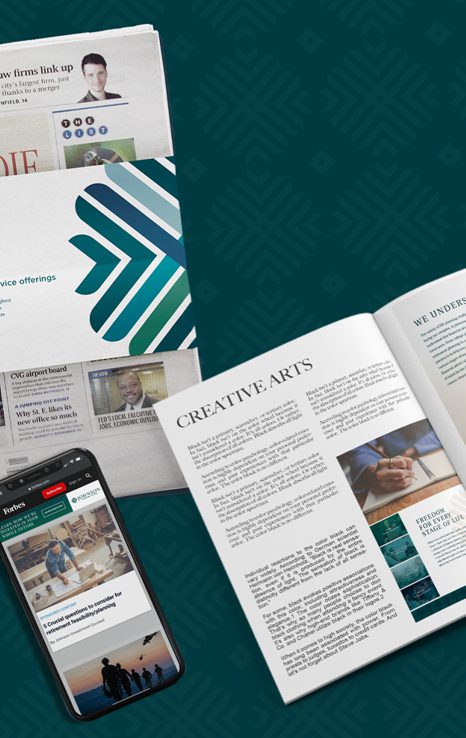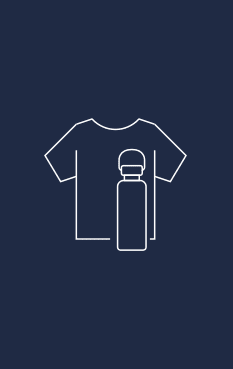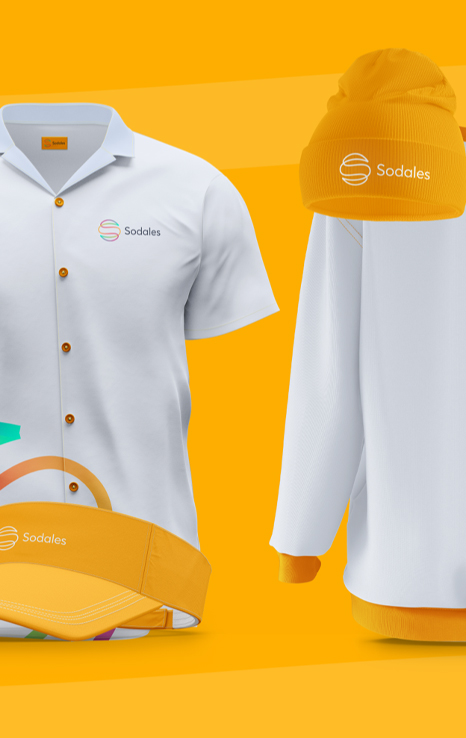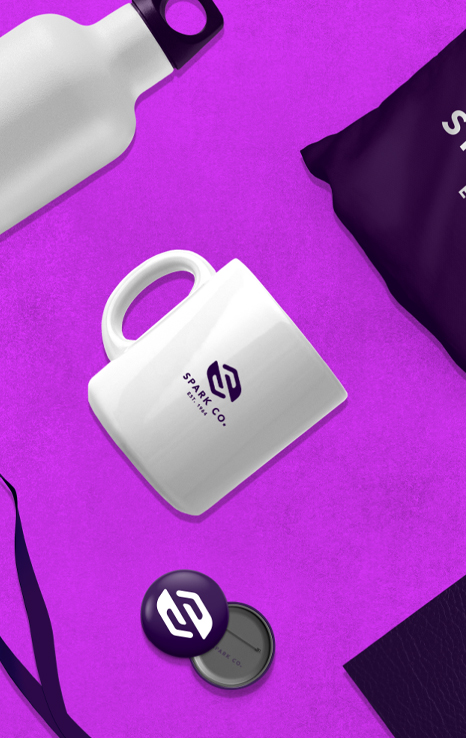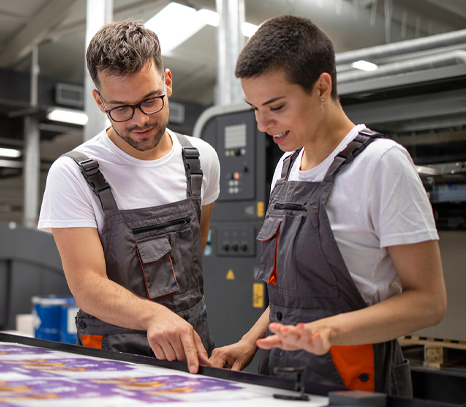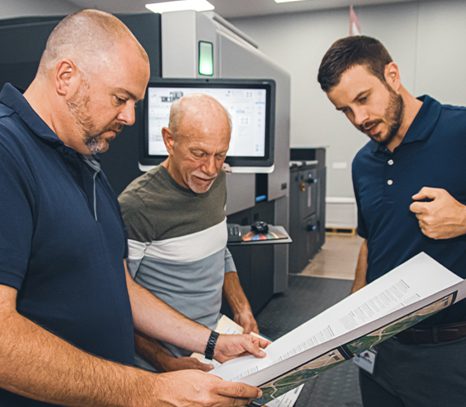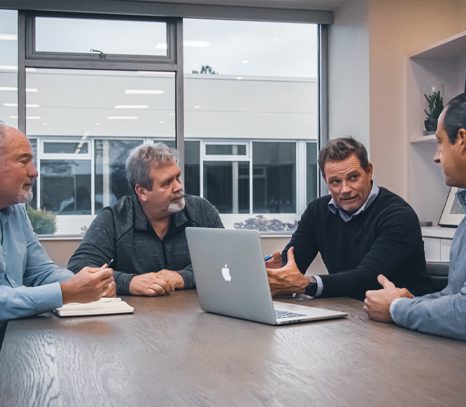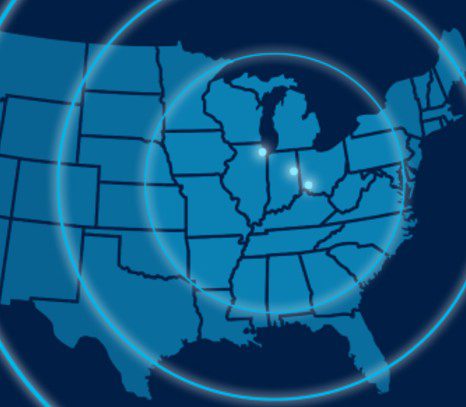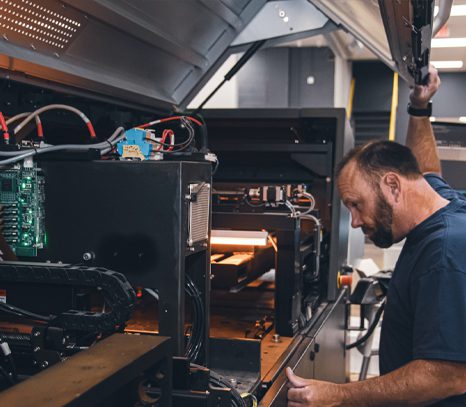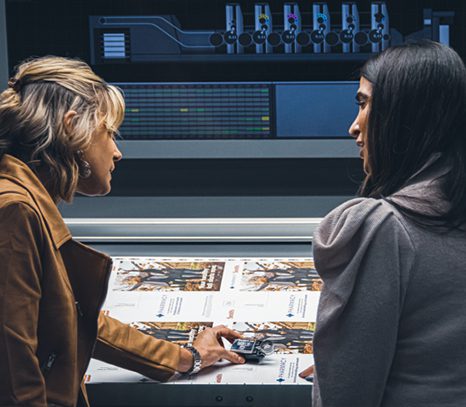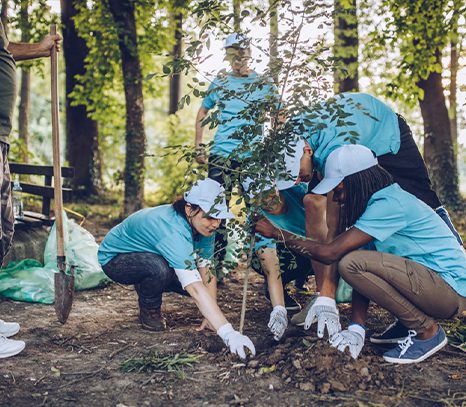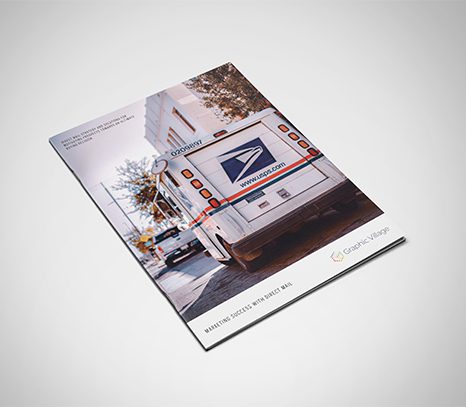From hospitality to energy, no industry has been immune to the economic effects of COVID-19. Design and branding, an industry which feeds all industries and is closely aligned to our own, is no exception when it comes to feeling the impact of the virus. In an effort to highlight local talent in the region at this time, Graphic Village sat down with Tommy Sheehan, owner and co-founder of Cincinnati-based creative studio, TOMMYINK.
A UK transplant from South London, Sheehan established his design chops locally, cutting his teeth at not one, but two international Cincinnati brand consultancies – Landor and LPK. After 20 years in corporate branding, and with the confidence to bet on himself, he founded TOMMYINK in 2018 where he now delights in not only bringing brands to life, but also celebrates them in his own, unique way. Having a global reach, his work is most familiar locally through designs for the Bunbury and Bellweather Music Festivals, Rhinegeist and Narrow Path Breweries, as well as the Sing the Queen City installation created in conjunction with Artworks. Recent partnerships include work for FC Cincinnati and the MLBPA.
GV: Growing up, what were your visual influences? What really spoke to you? Was it album covers? Skateboarding? Magazines? A combination of that? What influenced you visually when you were young that eventually pushed you towards being a designer?
TS: I think when you’re growing up, quite early in life, you’re receiving signals that you don’t realize are having effects on you as much as you think they are. We didn’t really have skateboard culture, but BMX culture was big [in the UK]. Like, just running around with your friends on bikes. Running the streets. BMX culture was big then, and simply the graphics on the side of helmets were a big draw too.
Additionally, London transportation. When it came to the letters and the numbers on signs – the older I get, the more obsessed I am with those forms of informational details that come to fruition, and some of the more traditional typefaces as well. I’m really paying attention to that stuff – I find myself kind of going back through logs and books, and trying to understand the negative and the positive spacing; and really sort of geeking out on some of those more informational design pieces. I think it has been hugely influential.
Also, I think for me, with moving to America, you get this colliding combination of America and UK in my design sentiments. You get a mix of traditional, classic, wayfinding British design combined with a lot of the fashion and flair from the punk scene in the 80s; further combined with some sort of rustic, hillbilly Americana, rufty-tufty thing. You know what I mean?
But then I like to ping-pong back and forth between very clean, minimalistic design and then conversely all the way in on things that are completely decayed and destroyed. That’s what I seem most influenced by yesterday, today and even into tomorrow as well.
GV: I’ve noticed that about your particular style. Everything looks distressed, like it has a hand-printed look. Is that accomplished digitally?
TS: It all depends on the project. I let the project kind of guide me and dictate what the right aesthetic should be – as opposed to me coming into it with a specific style. I like to listen first, get the information, and then just let those words sort of be my guide, instead of a preconceived notion on the page. It might be an illustration. It might be something digital. It’s all over the board.
GV: Was music ever an influence?
TS: Oh yeah. Music is still a part of me. I have it on 24-hours a day. I literally come down to my living room and turn the volume up. Same thing in my studio. I can’t live without it. It’s everything. Even various genres of music, I don’t care what it is. I don’t care if I’ve heard it before, whether it’s good or bad, I’m indifferent. That’s when I’m like, OK, this is interesting. So, yeah, music is massive.
I remember those first music videos. I think it was Video Killed the Radio Star by the Buggles, and Mickey as well. Those videos assaulted the senses. You had the audio as well as the visual component coming together. So that was a huge influence.
GV: What music did you listen to growing up in the UK?
TS: I was all over the place. My parents were into everything, from disco to reggae to rocksteady, which rocksteady came before reggae. Then there was traditional rock, British pop, and then I remember hearing Prince for the first time, and going what the f@#k? This is amazing! So yeah, a ton of reggae, rocksteady, but then ZZ Top and The Police too. Also, my grandparents were heavily into Motown, and we had all this Motown stuff playing. It was amazing. There was northern soul music as well, which were like rare 60s soul records that never made it into the Motown Top 40, but you’d hear these amazing artists, where these vinyls would make their way, via boat, to England; and then people in England would just gobble this stuff up. So, all this stuff was massive.
GV: Were you finding that the aesthetics of those genres were influencing you? Obviously punk has a certain aesthetic, and then the look of Motown covers, and even blues. The old Blue Note jazz covers, were they an influence?
TS: Yeah, but not ‘til later on in life. I think the first design that I really responded to from a music aesthetic was one of the original Blues Brothers posters. My Dad had it, and just the graphic depiction of the faces with the color that was used, and the boldness of it affected me. I remember I would look at that thing all the frickin’ time. And I would walk past it, not realizing I was studying it, and wondering what was going on there. It was that type of thing visually. Also, Bob Marley album covers and his face, and the typeface that was used with the lion. Those things had a huge effect, but I didn’t really realize it until years later, when you think, OK, these are the original signals that were planting their seeds to what would later become my career.
GV: Who are you looking at today? What other designers or studios do you follow? Are you on Instagram? Do you follow the work of other studios?
TS: Yeah, I do to a certain degree, but really, I feel I’m starting to do less and less of that. I think it’s more of a case of trusting my own gut. You’re always going to be inspired by other people’s work, but now I’m kind of really listening to myself internally for choices to make as opposed to being heavily influenced by other designers. I would have done that years ago, and did do that, but I think it’s more of a case of, this is my world, and I’m going to create what I see fit in that world.
GV: So what influences you now? You referenced album covers and posters at an early age, but while we absorb visual information in your youth, when we get older, and more established in our careers, not so much anymore. What do you do now to find inspiration? Are you finding it as easily as you once did? Are you still absorbing?
TS: There’s so much of it out there. There’s so much content out in the world, so I think it’s important to get out of the building and over to the CAC or whatever art house, and look at the physical “stuff” in the world. You know, like the Sign Museum – unbelievable. There’s so much stuff just here in Cincinnati and around the area. There’s so much stuff to visually latch onto. Even with all our murals in Cincinnati, it’s ridiculous, in a good way.
GV: How do you trust your intuition? How do you know a certain design direction is the right direction? Where do you begin? Do you sketch?
TS: You just have to ask the right questions upfront, instead of me going off into a silo, and creating stuff just for the sake of creativity. I mean, I can do that for myself, but it doesn’t really serve the client. I don’t see the reward if I’m off just doing my own thing without getting as much information upfront as I possibly can. And it should be open. It should be a dialogue. A conversation. And then letting those words help guide what the work should be at the end of the day.
GV: How does work initially come to you? Are you going out to get it, or have you reached the point where clients now come directly to you? Also, walk me through your initial discovery process.
TS: I’ve been lucky. I haven’t had to really reach out that much recently, and I think when you first go solo, the first thing you want to do is keep the lights on for the first month, and then hopefully good work will attract other good work.
But it’s really about talking, conversating, and getting the information in, and really understanding what the project is. What do they want to be essentially, and then you start mining and crafting, and try to extract as much information as you can before you then go off and try to find a couple of things that are falling out; and letting these things guide you for the specific pieces that will be created out of that.
GV: Do you have certain standard questions that you begin with when you initially meet with the client?
TS: Not really, because I don’t think you can just be like here’s the same ten questions for a spirits company as opposed to a beauty care company. It doesn’t happen. You have to look at the lane or the sandbox that you’re playing in first, and then maybe craft those questions accordingly.
GV: So, when you return to your studio, and you’ve had this conversation, what’s the next thing you do? Do you begin research?
TS: Yes, research, mining information, and then that’s when I go off and do my creative thing. And that could take up to a week, three weeks or a month. Then, once I’m feeling good about the input, and I’m feeling good about the output that I’m creating, that’s when I’ll get together with the client.
GV: What do you present at that moment? Do they see sketches? What stage are you at?
TS: Not really. The sketches happen in the early development period. You want get pretty lean, and quickly, so I’m not so much a sketches person. I want to present more finalized, gestural areas, because if you’ve done your job upfront, then you can get somewhere pretty quickly.
How many iterations do you go through before you’re satisfied with the final results?
TS: It’s all different. If I’ve done my job in the beginning, then I’m getting there pretty quickly. Hopefully, I don’t have folders that say, “ZZ” on them. So essentially two or three rounds at the most. Then hopefully I’m getting into a really good spot. Preferably, I’m getting there in one or two rounds. That’s my ideal world.
GV: Of the work that you’ve done, what do you find most inspiring? Which are the jobs you’ve most enjoyed working on?
TS: Well, I still love the beer and spirits world. It just ends up being such an influential part of culture, an American culture. Any of those products and projects that people are interacting with. However, I’ll still go back to the Sing the Queen City project. I just love seeing people climb all over that signage downtown, which was done in conjunction with ArtWorks. That’s the one that makes me the happiest out of all the work I’ve done so far. People are just making it their own.
GV: How did you start working on that?
TS: It was through LPK. First it started at LPK, and then I was doing some side projects for TOMMYINK at the same time. LPK couldn’t give a ton of my time away to the project, so I began doing it on my own accord, eventually bringing it under the TOMMYINK umbrella.
GV: As far as collaboration, you have your own style, but when you are collaborating with others, do you find that your combined aesthetics create something new?
TS: Yeah, that’s the intent. When you collaborate with anyone, you’re hopefully working in a space where no one is bringing ego to the table. No one wants assholes in the room. You want to be able to riff, and actually do what’s right for the client and the work. You want to lean into each other’s strengths essentially, whether it’s looking at something differently or being able to unpack some information in a slightly different way than you would have done on your own. That’s where the magic happens.
GV: What clients would you like to collaborate with?
TS: Anyone who wants to work with me, really. You know at the end of the day, it’s more of a case where I’ve done a tone of work, and I’ve been in this game for so many years, having worked on huge brands and tiny boutique brands, that I feel I’ve really enjoyed the ride so far. I love the unknown, so anything I haven’t worked on yet is interesting because I’m learning something new.
GV: I’ve been hearing for years that print is dead. Do you think print is dead?
TS: Definitely not. No way. I think we’re always going to be yearning for the idea of touch. We’re not going to kill off one of the major senses. There’s no way. Absolutely not. That’s very trendy to say something like that, and I just don’t believe it. Consider that things are coming back around that we thought were gone. Vinyl records and stuff like that are going through a major boom right now because people are yearning for these tactile things.


